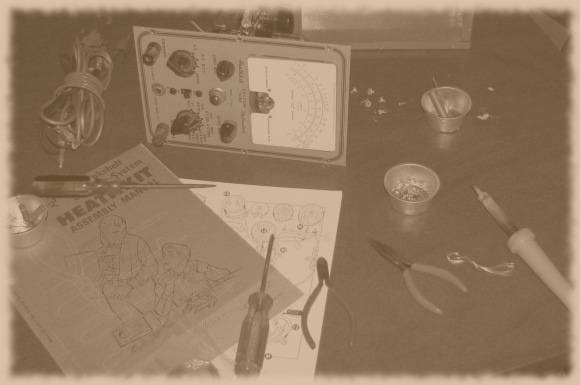

(This article was written by Frank Beacham for Radio World in 1992.)
When I saw the story on the front page of the New York Times my heart sank. It was like reading of the death of a old friend. There was the headline: "Plug is Pulled on Heathkits, Ending a Do-It-Yourself Era."
After 45 years, the Heath Company is closing out not just a line of assemble-your-own electronic kits, but a nostalgic era of American life. It seems the age of the computer and the integrated circuit has spelled doom for us "kitchen table" engineers.
The electronic kit business, a Heath official said, ran head on into the "instant gratification society." Declining interest in kit building and increased costs finally killed the line of products that introduced a generation of Americans to the miracle of electronics.
I've lost track of how many Heathkits I've built over the years. The first, I think, was a simple radio. The last, about a decade ago, was a Hi-Fi amplifier. I always went for the small stuff, never having the nerve to tackle that big, imposing color TV kit in the catalog.
Building a Heathkit meant staking out a piece of family turf, usually the kitchen table, and commandeering every available muffin pan and small dish to hold the dozens of resistors, capacitors, screws and washers that came with every kit. Then there was the cord to the soldering pencil -- always too short -- which my little brother continually tripped over, causing burn marks on the linoleum floor, or, sometimes, his skin.
"When will you finish that thing and clean up this mess?" my annoyed mother usually asked about the third day into a Heathkit project. Those estimated completion dates I gave were always delayed well into the future.
The great excitement of building a Heathkit for me was the moment of truth when I plugged it in and first turned the power switch on. I always backed away from the kit, fully expecting it to blow up in my face at the moment the surge of electricity hit those parts. But, you know, those kits always worked the first time. The fire and smoke never came. In fact, I don't remember a Heathkit ever failing for any reason throughout the years I owned them.
Few things have been as well written in technical literature as a Heathkit manual. That's one piece of American technical ingenuity the Japanese have never come close to duplicating. Heathkit really meant it when they said: "We won't let you fail."
Once you mastered Soldering 101, it took a lot to go wrong. Step by step, check by check, the Heathkit builder was led meticulously though that sea of parts. Failure to successfully build a Heathkit usually revealed flaws in the kit builder's patience and temperament, rather than the kit itself.
My favorite kits had tubes and very basic parts. Electronic circuits seemed comprehensible back then, even to a novice, and the warm glow of the tubes brought far greater satisfaction than those plain black "solid state" parts which invaded the kits in later years.
When I called the Heath Company in Benton Harbor, Michigan to ask about the demise of the Heathkit, I was referred to the public relations office at Zenith Data Systems, Heath's corporate parent. I was told there was no news release about the sad event and William E. Johnson, Heath's president, was too busy to take press inquiries. Heath now wants to emphasize the sale of its line of home improvement and educational products, a spokeswoman said.
But as much as today's Heath Company may want to downplay this historic transition, the kit was the basis for the company former barnstormer Ed Heath began in 1926. The first Heath products were airplane kits. But after Mr. Heath died in a crash on a test flight, the company was reorganized and moved into the electronic kit business. The first Heathkit was a five-inch oscilloscope, introduced in 1947 at a price of $39.95.
The day after my call to Heath headquarters, a copy of the new Heath catalog arrived via overnight delivery. Inside was a smattering of kits still available. Among those were a DC power supply, a mini burglar alarm, an infrared motion sensor and an electronic "fish caller." The remnants of a glorious past are now reduced to slim pickings.
But I think I'll order a couple of those remaining kits and stash them away. Maybe a few years down the road I'll pull one out and introduce the right kid to a simple pleasure of my generation. Yes, the times, they are a-changin,' but hopefully we won't lose the rich experience of taking a nondescript bag of electronic parts and using our brains, skill and patience to construct and create something very special.
Goodbye Heathkit. Thanks for the memories.
The text of So Long, Heathkit is the property of Frank Beacham and is used with his permission.
The photo "KitchenTableKitBuilding02.jpg" copyright © 2008, William Albert Wilkinson. All rights reserved.